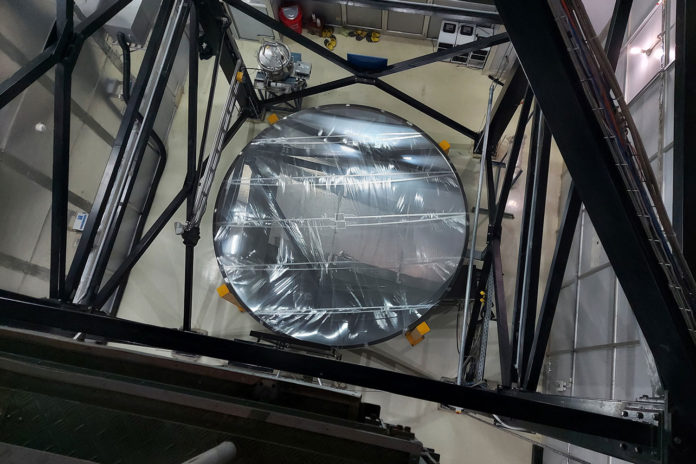India has set up its first-ever liquid-mirror telescope facility atop a mountain in the Himalayan range. The liquid telescope will now keep a watch on the overhead sky to identify transient or variable objects such as supernovae, gravitational lenses, space debris, and asteroids.
The International Liquid-Mirror Telescope (ILMT) is located at an altitude of 2,450 meters at the Devasthal Observatory campus of Aryabhatta Research Institute of Observational Sciences (ARIES). The telescope will help survey the sky, making it possible to observe several galaxies and other astronomical sources just by staring at the strip of sky that passes overhead.
Built by astronomers from India, Belgium, and Canada, the telescope employs a 4-meter-diameter rotating mirror made up of a thin film of liquid mercury to collect and focus light. The scientists spun a container filled with around 13 gallons of mercury, which is a reflective liquid, so the surface curved into a parabolic shape which is ideal for focusing light.
The reflected light passes through a sophisticated multi-lens optical corrector that produces sharp images over a wide field of view. A large-format electronic camera located at the focus records the images. “The rotation of the earth causes the images to drift across the camera, but this motion is compensated electronically by the camera. This mode of operation increases observing efficiency and makes the telescope particularly sensitive to faint and diffuse objects,” said Prof. Paul Hickson (University of British Columbia, Canada), an expert on liquid mirror technology.
ILMT is the first liquid-mirror telescope designed exclusively for astronomical observations installed at the Devasthal Observatory of ARIES, mentioned ARIES Director Prof. Dipankar Banerjee. The Devasthal Observatory now hosts two four-meter class telescopes – the ILMT and the Devasthal Optical Telescope (DOT). Both are the largest aperture telescopes available in the country.
“The wealth of data generated with the ILMT survey will be exemplary. In the future, several young researchers will be working on different science programs utilizing the ILMT data,” said Dr. Kuntal Misra, who is the Project Investigator of ILMT at ARIES. “When regular science operations begin later this year, the ILMT will produce about 10 GB of data every night, which will be quickly analyzed to reveal variable and transient stellar sources,” said Dr. Brajesh Kumar, ILMT Project Scientist at ARIES.
The 3.6-meter DOT, with the availability of sophisticated back-end instruments, will allow rapid follow-up observations of the newly-detected transient sources with the adjacent ILMT. The data collected from ILMT will be ideally suited to perform a deep photometric and astrometric variability survey over a period of typically years.
Along with ARIES in India, the ILMT collaboration includes researchers from the University of Liège and the Royal Observatory of Belgium in Belgium, Poznan Observatory in Poland, the Ulugh Beg Astronomical Institute of the Uzbek Academy of Sciences, and the National University of Uzbekistan in Uzbekistan, the University of British Columbia, Laval University, the University of Montreal, the University of Toronto, York University and the University of Victoria in Canada. The telescope was designed and built by the Advanced Mechanical and Optical Systems (AMOS) Corporation and the Centre Spatial de Liège in Belgium.
